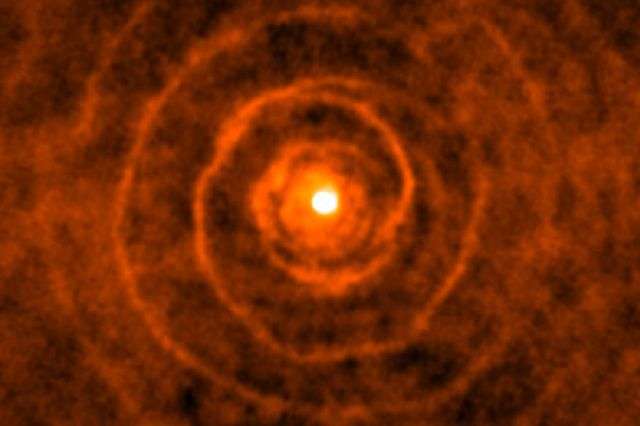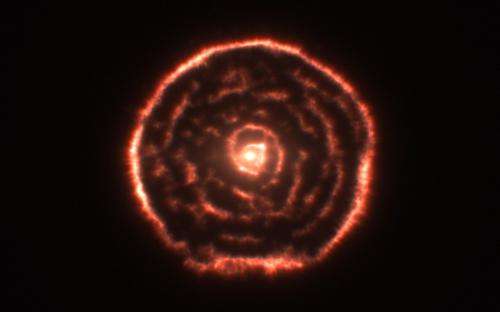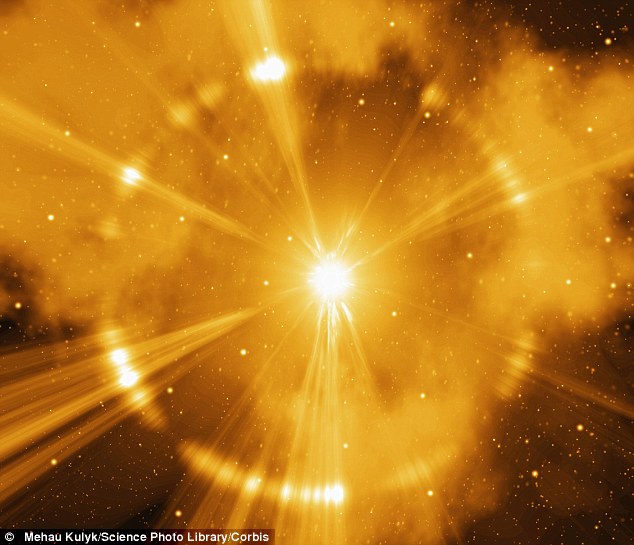The phenomenal site of a dying red giant star’s final act was captured by a team of international astronomers using the Atacama Large Millimeter/submillimeter Array (ALMA) just recently. The star, named Pegasi has located 3.400 light years away from us and was a spectacular site for astronomers to be able to see it in its final moments.
Co-author of the study and professor of physics and astronomy at UCLA, Mark Morris, commented, “What we see in splendid detail with these observations is the final act of a dying red giant star, as it sheds most of its gaseous bulk in a strong, outflowing wind.” After analyzing their observations and comparing them against computer simulations, the astronomers found that the reason for the shape of the gaseous emissions surrounding this system was due to a highly elliptical orbit.


“Because of the orbital motion of the mass-losing red giant, the cold molecular gas constituting the wind from that star is being spun out like the sprays of water from a rotating garden sprinkler, forming the outflowing pattern of spiral shells,” said Morris. Using ALMA, the team were able to construct a 3D image of the emission from ejected molecules from LL Pegasi that then formed a spiral pattern caused by its companion star orbiting nearby.
These images will help scientists understand the dynamics of the binary system and how it evolved over the last 5,000 years. Morris commented, “This unusually ordered system opens the door to understanding how the orbits of such systems evolve with time as one of the stars loses most of its mass.”
More News to Read
- The Dark Secrets of Quantum Gravity Could Be Unraveled By Fuzzy Pulsars Orbiting Black…
- Is It Possible to Grow Potatoes on Mars?
- New Startup UrbanX Revolutionizes the World of Cycling
- China Government Gives the Green Light to Development of Artificial Intelligence
- Giant Ice Bubbles Could Soon Be Used as Homes for Astronauts











